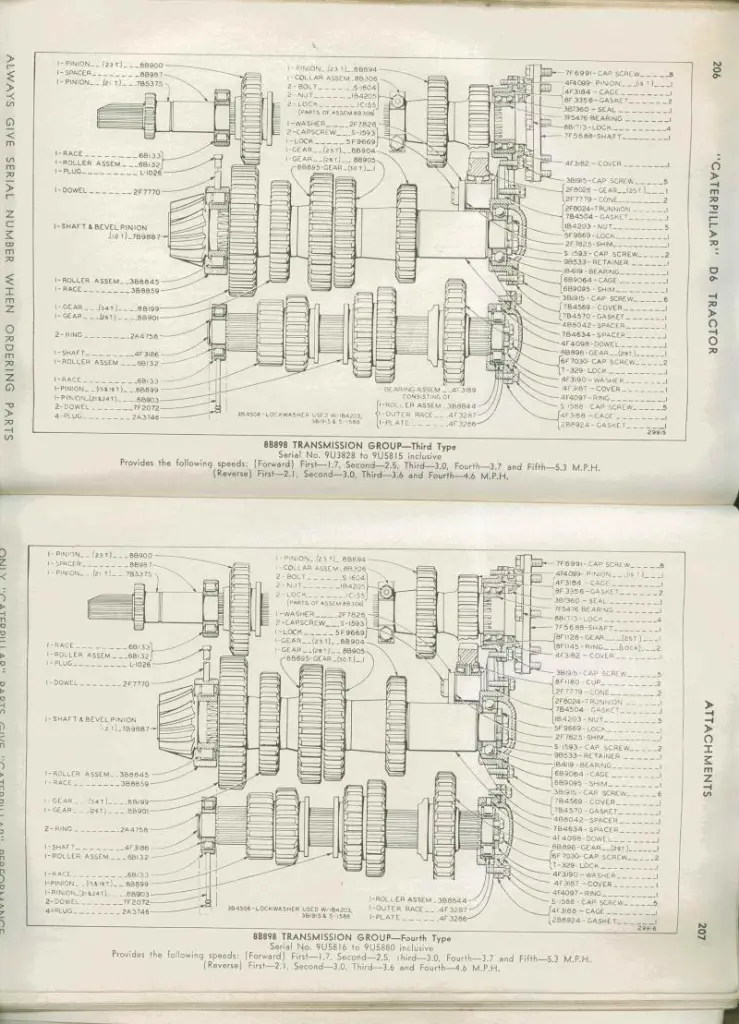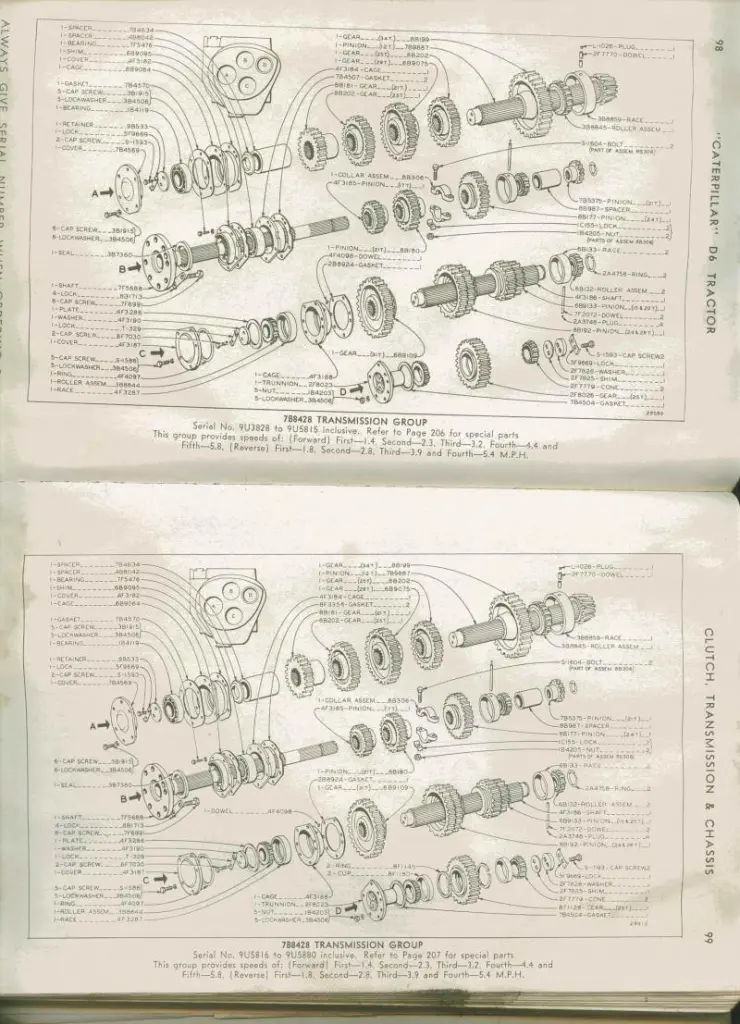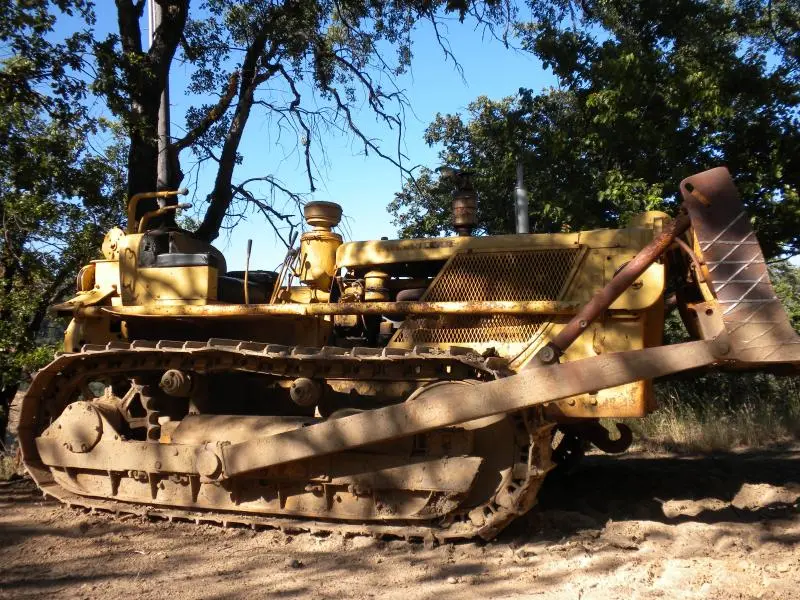
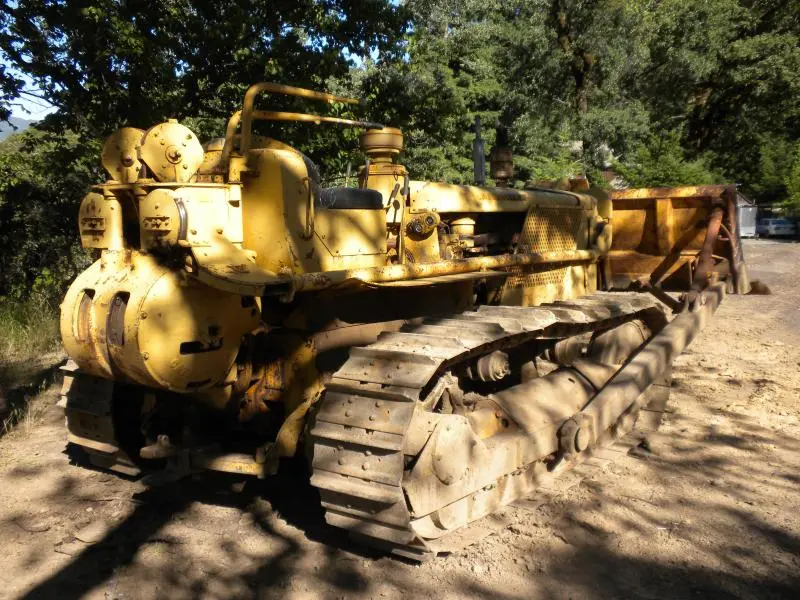
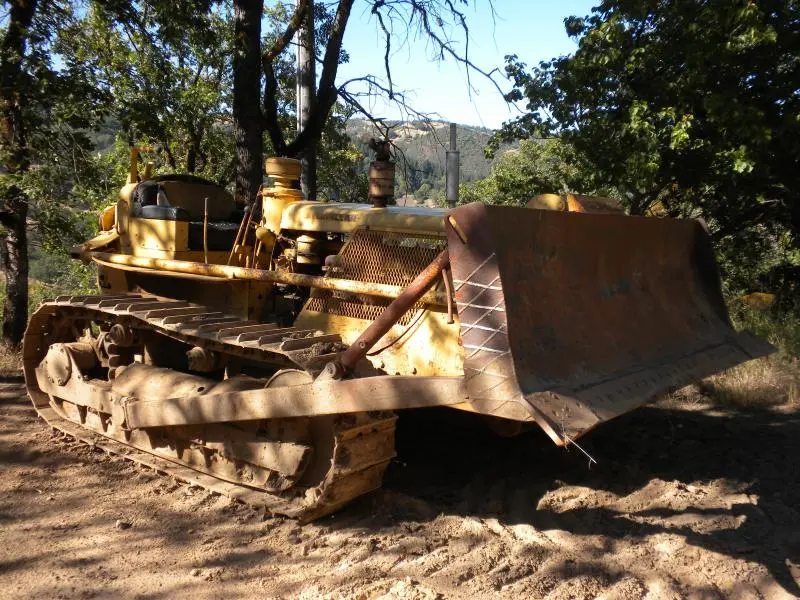
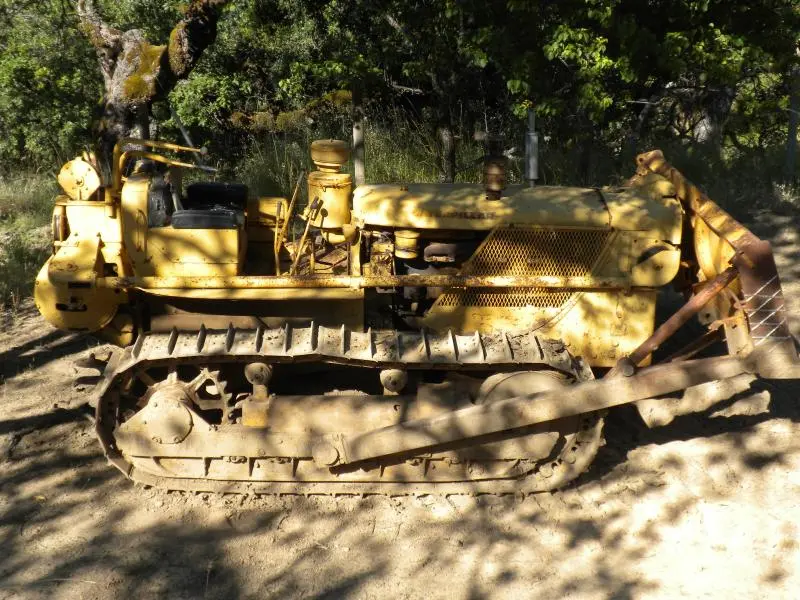
1950 model year production started at #9U4326 and ended at #9U6981, so yours was built early in that year. As far as the SP, all I know is that meant something required special parts during assembly on the line, usually deep inside the machine - not just an attachment. Perhaps someone that knows more about the 9U's can tell you what parts that may have been.
Thanks Toby - I was guessing late 40's based on the low S/N so early 1950 certainly makes sense.
Next question - I don't drive this crawler very often - like my water tanker it's been on the property since I bought it and is there primarily for emergencies (I live in rural Northern CA - so we are very cautious about fire season). I only fuel it with petrol when I need to start it, but what is the recommendation on the diesel? The tank is so large, and the need so limited, a tankful could last me a decade if I left it in there. Unlike my fire truck, which I start every week of the year (partly for the batteries) and drive whenever I need a quick getaway, this guy sits around a lot waiting for a job that's rarely there - so I never know how much diesel to leave in it. I always want to make sure its relatively fresh (which means it's rarely full). Any recommendations on how to best address this - is an additive sufficient for extended periods of time if I keep it full? I hate to find out I made a mistake when I really need it!
Thanks again...
here is a list of serial numbers by model and year.
http://www.chriscomachinery.com/D6serial.htm
The way I understand the SP part, it's anything added to the bare bones critter at the factory. If the CCU and blade was added there, it would qualify the SP part.
The Special parts on the serial number tag tells the parts man that something from the standard tractor was exchanged with an alternative part.
If you look through the parts book from a tractor of this vintage you will see in certain sections a note at the bottom page that reads "Refer to pages ## for special parts," this would be one of the parts that could be exchanged with special parts available when the tractor was ordered.
Unfortunately the SP tag is quite vague on which part was exchanged with a standard part.
For example if you ordered a rear seat tractor when a person would look in the parts book under the standard fender, seat, hood, fuel system, drawbar, control, and indicator group sections there would be a note at the bottom of the diagram referring you to a correlating page in the parts book where the an alternative part is drawn.
Cat's recommendation on fuel storage life is 1 year.
On the 9U, SP most likely refers to a transmission gear option.
rsbanker,
Here what Caterpillar has to say about the letters SP.
SP= Special parts
“SP” stamped at the end of the Serial Number indicates special parts were substituted for standard parts on the machine. Examples include special transmission gears, oversized idlers in place of standard idlers, and other items that required special attention on the assembly line, usually “deep” in the machine. “SP” was not used for add-on accessories such as lights, cab, PTOs, crankcase guards, and mufflers.
Serial number Reference Manual, January 2000.
Caterpillar Service magazine, February 20, 1941, also defines “SP”.
Cat's recommendation on fuel storage life is 1 year.
On the 9U, SP most likely refers to a transmission gear option.
